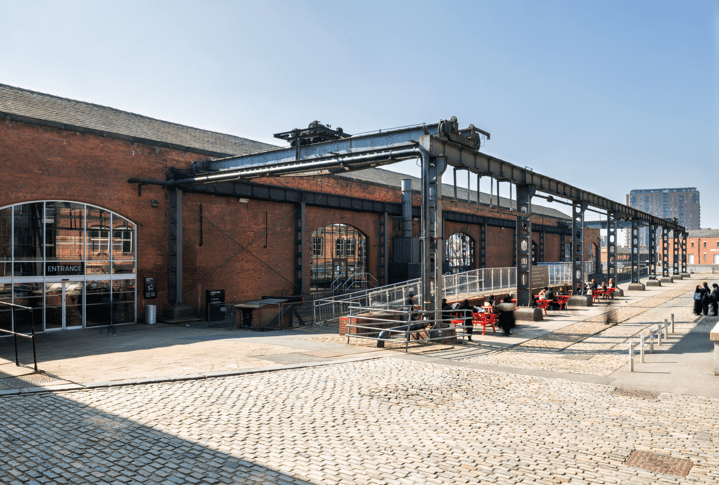A significant heritage restoration project has begun at one of Manchester’s landmark museums.
The Science and Industry Museum in Castlefield, sits on the site of the world’s oldest surviving passenger railway station at the heart of the world’s first industrial city.
Essential repair work is now taking place to restore its iconic 1830 Viaduct and the gantry connected to the Power Hall, a piece of once cutting-edge technology that shows how the historic station was transformed into a busy goods depot. Both structures are long-standing symbols of Manchester’s industrial past.
The 1830 Viaduct is in need of essential repairs to reverse historic water ingress and protect it from predicted increase in rainfall, while the gantry requires old paint to be stripped, rust removed and areas impacted by water damage, repaired.
This next stage of conservation work is part of a multi-million-pound restoration programme taking place across the Science and Industry Museum’s globally significant site.
Visitors will be able to see engineering in action as scaffolding is erected around the gantry to enable much-needed repair and conservation works. Innovative waterproofing solutions are also being put in place across the 1830 Viaduct to futureproof it for years to come.
These works have been made possible by the museum’s current £14.2 million worth of national capital funding by the Department of Culture, Media and Sport (DCMS) to complete urgent repairs across New Warehouse, the gantry and the 1830 Viaduct.
The Science and Industry Museum celebrates ideas that change the world, from the Industrial Revolution to today and beyond. It’s uniquely placed to tell this story – on the site of the world’s oldest surviving passenger railway (formerly known as Liverpool Road Station), in the heart of the world’s first industrial city.
The 1830 Viaduct is part of the site’s original railway station, which opened in September 1830. Liverpool Road Station was the Manchester terminus of the world’s first inter-urban railway, which connected industrial Manchester with Liverpool’s docks. The railway’s engineer, George Stephenson, designed the Viaduct to solve the problem of Liverpool Road’s sloping land, creating a flat upper level to support the railway tracks.
Mostly hidden by the station’s buildings, the Viaduct runs from the middle of the Power Hall out towards Water Street. Together with the1830 Station, it makes up the most complete surviving early railway station complex in the world and serves as a tangible reminder of Manchester’s key role in the Industrial Revolution.
The gantry was built during the 1880s. It supported travelling cranes that moved heavy goods from one wagon to another. This was cutting-edge technology at the time and was designed to help workers handle the loads coming on and off the railway.
Sally MacDonald, director of the Science and Industry Museum, said: “We are so excited that another stage of the site’s multi-million-pound restoration project is underway. The gantry is an iconic structure in Castlefield’s skyline and we’re looking forward to repairing and restoring it for generations to come. The 1830 Viaduct also plays such an important part in telling the story of our historic site in connecting Manchester with the wider world.
“This work may cause some disruption which we will try to keep to a minimum, but we hope visitors continue to enjoy visiting the museum where they can see live engineering and innovation in action as we continue to care for our historic site.”
The restoration work is expected to be complete by Spring 2025 when the museum also plans to reopen its iconic Power Hall. The museum will remain open throughout and is available for evening events in the Revolution Manchester Gallery and in the 1830 Warehouse across 2024 and 2025.




